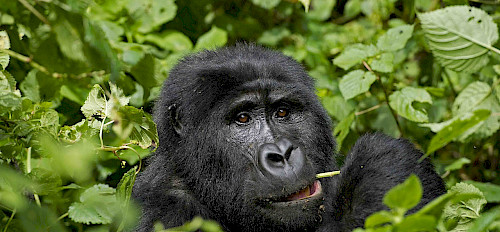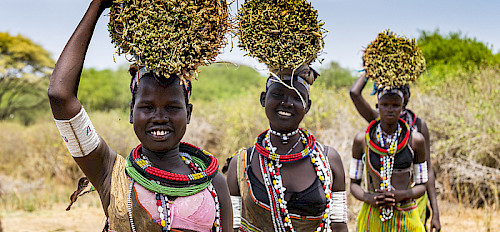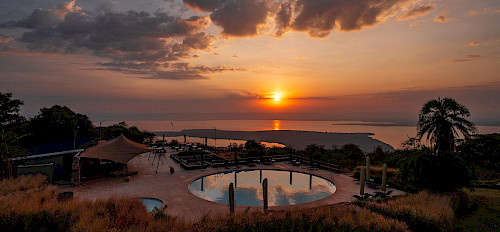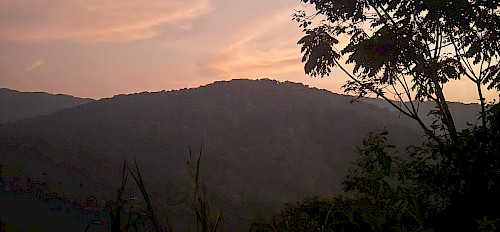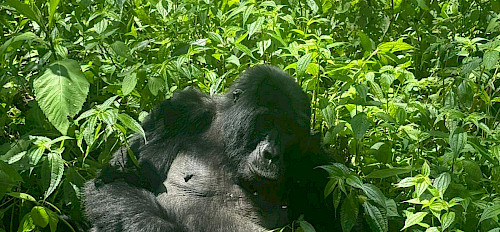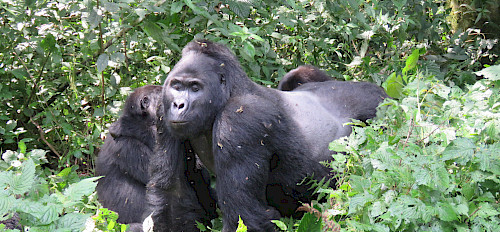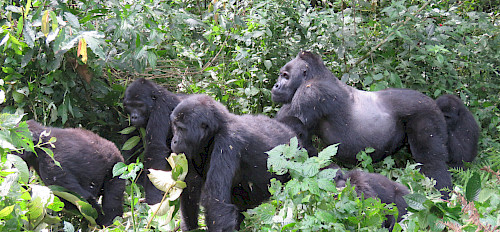The best time to visit depends on the activities you plan to engage in and the type of experience you seek. This guide will walk you through the ideal times to visit Uganda for different activities, such as gorilla trekking, safaris, and bird watching.
Gorilla trekking is one of Uganda's most iconic experiences, allowing travelers to encounter endangered mountain gorillas in their natural habitat. Uganda offers two prime locations for trekking: Bwindi Impenetrable Forest and Mgahinga Gorilla National Park. The best time for gorilla trekking is during the dry seasons, from June to August and December to February. These months are popular because the trails are less muddy, making the dense forests easier to navigate. Clear weather also provides excellent visibility, increasing your chances of spotting gorillas. Since these months are peak season, booking permits well in advance is highly recommended.
Die beste Reisezeit für Wildtiersafaris in Uganda ist die Trockenzeit, die von Juni bis August und von Dezember bis Februar dauert. In diesen Monaten bieten Ugandas Nationalparks wie der Queen Elizabeth Nationalpark, der Murchison Falls Nationalpark und der Kidepo Valley Nationalpark außergewöhnliche Möglichkeiten zur Wildtierbeobachtung. Tiere wie Elefanten, Löwen, Leoparden und Flusspferde versammeln sich häufig an Wasserquellen, sodass sie leichter in großer Zahl zu sehen sind. Das trockene Wetter sorgt außerdem für eine bessere Straßenanbindung innerhalb der Parks und einen klaren Himmel, der sich perfekt zum Fotografieren eignet.
Uganda is a birdwatcher’s paradise, boasting over 1,000 species, including both native and migratory birds. While birding can be enjoyed year-round, the best time to see migratory birds is from November to April. During this migratory bird season, birds from Europe and other parts of the world flock to Uganda’s wetlands and forests, creating a vibrant and dynamic environment. This period is ideal for avid birdwatchers, as the variety of species makes Uganda a top birdwatching destination.
Uganda has a predominantly equatorial climate, meaning it enjoys warm weather year-round. However, the country experiences two main seasons: the dry season and the rainy season. The dry seasons (June-August and December-February) are ideal for most outdoor activities, while the rainy seasons (March-May and September-November) bring heavier rains, particularly in forested areas.
Temperatures in Uganda typically range between 20°C (68°F) and 30°C (86°F), with cooler temperatures in the highland areas such as Kisoro and Kabale.
If you’re looking to save on travel costs, visiting Uganda during the rainy season can offer some benefits. During this time, there are fewer tourists, and many lodges and tour companies offer discounted rates. However, it's important to consider the challenges posed by rain, especially if you plan on trekking or going on a safari.
